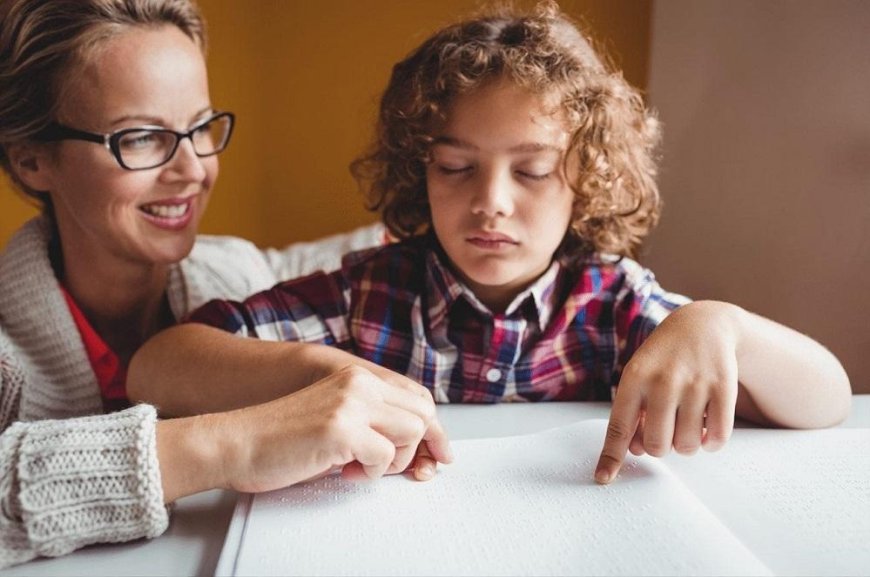Children with visual impairments at school
activities and games, children with visual impairments may also feel that they belong to the classroom and are a valuable part of it.Â

By participating in a range of educational activities and games, children with visual impairments may also feel that they belong to the classroom and are a valuable part of it.
Our society is working hard to ensure that children with disabilities - in this case children with visual impairments - also have easy access to activities they enjoy.
Playing with other children is one of the most important activities in the life of every young person due to the continuous development to which they are subject. Children with visual impairments are by no means an exception.
Children with visual impairments - four types of visual impairment
According to the World Health Organization, there are four different levels of classification of the quality of our vision:
- Normal vision
- Moderate visual impairment
- Severe visual impairment
- Blindness
Within these four categories, people also often fall into the following three subgroups: normal vision, moderate to severe impairment, and blindness.
Educational activities for children with visual impairments
Children with visual impairments develop better motor skills and are more adept at using other senses.
It is important, especially in class, that activities for children with visual impairments are available for each child. This means that teachers have to plan activities that can be carried out equally by all children.
This has a number of advantages for all children in the class:
Children with disabilities do not feel inferior to their classmates, but rather feel equal. This aspect is very important to their mental health.
Other children become more aware of the difficulties faced by their visually impaired colleagues and take them more seriously.
Thanks to these games, all children develop better motor and sensory skills, which is very important for children with visual impairments, but also benefits other children.
Fun # 1: Secret Code
Secret Code is a game recommended for older kids as it can be a little more complicated. In the open space, the teacher creates a small obstacle course.
The obstacle course consists of small paths through which students must walk and deal with obstacles in the way. The team that passes the obstacle course first receives the trophy at the finish line.
Must Read: realme Brings Jaw Dropping Discounts on Daraz Mobile Week 2021
Before the children enter the track to reach the trophy, the teacher helps the children pair up and blindfolds one child of each pair. This means that a child who is not blindfolded must lead the other.
The activity is difficult because each pair of students has to work together in advance to create a special code for communicating with each other. This secret code should be color or sound based. For example, the code could be: yellow move right; blue, go left; dog barking, take three steps forward.
This game helps students work on the following skills:
- Finding your way without seeing your surroundings.
- Trusting another classmate.
- Developing memory by remembering a secret code that was established before entering the track.
Fun number 3: Object recognition
For toddlers of school age, the game of recognizing objects can be one of the favorite activities they can engage in with their visually impaired colleagues. The teacher blindfolds the children to give them all the same chances and arranges the objects so that the children have to rely on their sense of touch to identify each one.
It can be helpful if objects emit any noise or make noise. They can also be made of various materials. The objects used for this game should be of different textures and sizes so that children learn to recognize different features by touch.
We encourage you to try out the above activities. Each of these three games helps to develop perception by stimulating fine motor skills, benefiting not only children with visual impairments, but also children who have no problems with their eyesight.
